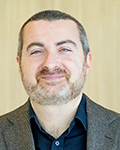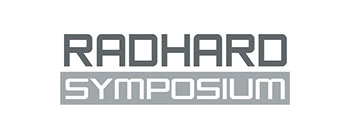Abstract

Is there light outside the funnel? How synchrotron light sources can help to overcome the major limitations related to heavy ions single event effects testing in electronic circuits
Ennio Capria1
1 European Synchotron Radiation facility (ESRF)
Abstract
Traditionally, heavy ion (HI) tests for Single Event Effects (SEE) qualification are conducted at cyclotron facilities with energies around 10 MeV/n. However, this testing method presents several drawbacks. Firstly, a demanding sample preparation is needed to probe the sensitive part of the component, which may not be possible for novel flip chip bonding technologies or 3D packaging and stacked dies. Secondly, obtaining beamtime at the facilities is difficult due to overbooking, and thirdly, HI source beam sizes are large, making it challenging to identify the exact location of the sensitive part.
In recent years, methodologies that use photons (lasers) to generate electron-hole pairs in materials have been used and validated to emulate the effects of HIs. However, this does not solve the problem of sample preparation.
Pulsed synchrotron has been shown to be an effective tool to emulate HIs and test electronic circuit sensitivity to ionising radiation. X-ray beams with high-energy photons (1 keV < E < 30 keV) can penetrate most metallization layers and have a large penetration depth in the semiconductor, enabling access to every embedded component within a 3D-chip. Furthermore, the X-ray beam can be focused below one micron.
This talk will discuss the challenges, opportunities, and trends of using pulsed synchrotron to emulate HIs and test electronic circuit sensitivity. The state of the art of this methodology, as well as the characteristics of different sources available, will be presented in the context of the synchrotron light sources landscape. Pioneering experiments carried at the APS in Chicago (USA) [1] and at the ESRF of Grenoble (France) [2] will also be reviewed.
References
| [1] | D. Cardoza, S. D. Lalumondière, M. A. Tockstein, S. C. Witczak, Y. Sin, B. J. Foran, William T. Lotshaw, and S. C. Moss (2012), “Single event transients induced by picosecond pulsed X-ray absorption in III–V heterojunction transistors,”. IEEE Trans. On Nuclear Science, vol. 59, no. 6, pp. 2729-2738, 2012 |
| [2] | G. Augustin, M. Mauguet, N. Andrianjohany, N. Chatry, F. Bezerra, E. Capria, M. Sander and K-O. Voss, “Cross Calibration of Various SEE Test Methods Including Pulsed X-rays and Application to SEL and SEU”, Proceedings of Radecs 2019 |
![[Translate to English:] [Translate to English:]](/fileadmin/uploads/intranet/events/radhard/2023/header-radhard2023.jpg)
